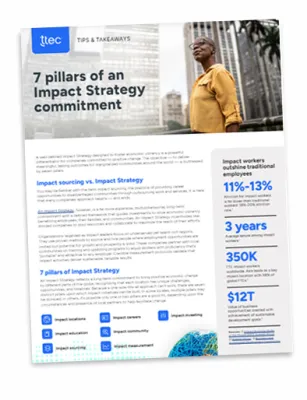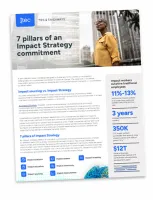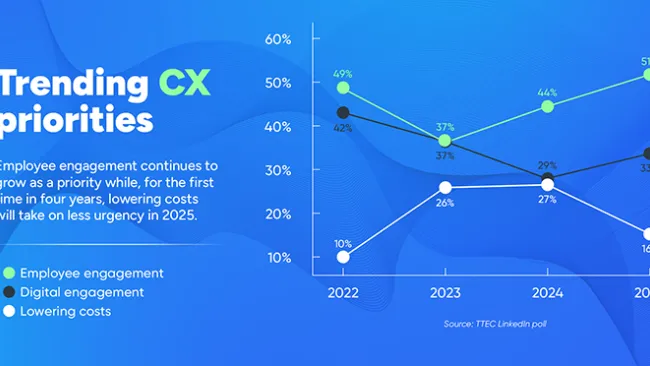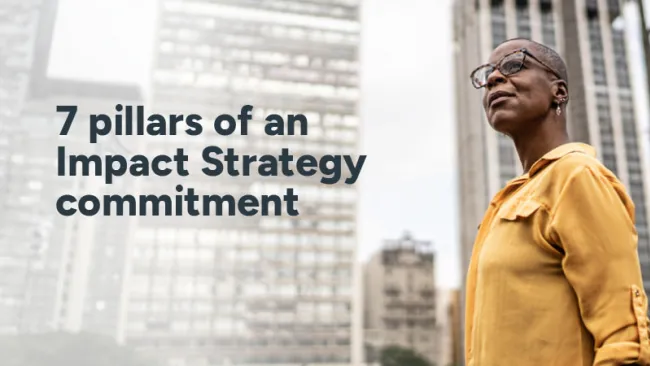A common challenge we hear from senior leaders at well-established companies is, “How do we fend off disruption and stand out in the market? How do we grow while balancing the needs of our customers, employees, and shareholders?”
To jumpstart growth, some firms look to alter their product mix or rethink their business models. These tactics may yield improvements, but they ignore a critical source of potential revenue and cost containment: corporate culture change.
A culture that is aligned enterprisewide to a common vision and set of beliefs and values will work in lockstep to realize success. Employees will inspire and support one another with activities that match the company’s change goals. In the process, there is opportunity to maximize profits and minimize inefficiencies.
For legacy companies with entrenched processes and ways of doing business, changing culture is a big challenge. No amount of senior management edicts or PR spin will enable a true culture shift without getting the entire organization on board to usher in change and maintain momentum over the long term.
Change is hard. That’s a given. Tack on expectations of immediacy and results permeating the business world, and it becomes even harder. Companies are expected to be nimble, quickly adapting to meet the needs of both employees and customers. And they are also expected to show results of their activities in a financial context. This atmosphere brings a sense of urgency to the need for change, as well as a new level of difficulty in enacting lasting change programs.
Culture change experts advise companies to think strategically about changing their culture, and offer a number of ways to influence attitudes and behavior across the company. (Most are variations on recommendations from change management guru John Kotter and his seminal book, Leading Change.)
We consider the change journey an end-to-end endeavor that involves the enterprise, small teams, and individuals. And we understand the need to show progress quickly while setting a long-term foundation. Our approach is based on seven change focus areas:
Establish imminent need. Change is only possible if there is a belief that imminent success or failure will occur. Leaders need to assess why change is necessary and then communicate it in a way that cuts through the status quo. Organizations and employees will move toward what they believe will bring pleasure (profits, margin, growth, security, peace of mind, recognition, etc.) and will move away from what they believe will bring them pain (reduced growth potential, over-competitive marketplaces, lack of opportunity, etc.).
Gather the right team. Align the senior leadership team with a consistent change vision, and create a dedicated group of change champions who are influential in both their personal and positional perspectives. Success in change is a lot about momentum. A positive spiral of momentum is created when enough people in an organization think, feel, and act in the same way to bring about change.
Set vision and values. Change in organizations works best when it inspires action. Setting a vision and values goes beyond the mission of making money and instead makes a statement about why, where, and who you are going to be, and how this is going to impact the customer. It has the power to move people.
Communicate and engage. It’s critical to develop a powerful and personalized communication mechanism that moves from away from “telling” and instead allows leaders to become true communicators of change. It continues to build momentum and engages all to internalize what it means for them to sign up for change.
Empower everyone. Empowering organizations to be more customer-centric is as much about enabling systems, processes, and structures as it is about the mindset of the individual and leaders. Without an empowering mindset, teams will find obstacles in even the best systems and structures, and change will start to lose momentum.
Recognize and energize. Change can create ambiguity and doubt. Recognizing the progress of organizational and individual changes builds powerful belief and motivation among team members that efforts are making a difference.
Institutionalize success. Once a new set of behaviors has been defined, communicated, and developed, sustainability secures longer term return on investment. The vision and values need to be woven into the annual business planning process, employee acquisition, performance management, and succession plans.
While all of the steps on the change journey are important, three stand out as most critical to success in today’s chaotic business landscape: set the vision and values, communicate and engage, and empower everyone.
Change and disruption are happening faster than ever. In the face of rapidly changing marketplaces, organizations need to develop systems and individuals who are prepared and adept at rapidly changing behaviors and tactics. Vision and values become the pointers that empowered individuals and teams use to create and share winning formulas in this rapidly changing environment.
Passion to performance
A successful change initiative will unlock employee passion and apply it in a business context. We humans are naturally passionate. It’s why we fill much of our free time and energy exploring these passions, such as art, music, sports, hobbies, social causes, etc. My passion for tennis cost me thousands of dollars and hours over my lifetime trying to improve my game and watching the pros play, for instance. Others are just as involved with their passions. The challenge is to genuinely create a similar energy level at the workplace so that it makes life meaningful in the context of work.
A strong corporate culture can help rally employees around an issue or topic that they are passionate about. Purposeful organizations set clear vision and make a statement about what their culture needs to be. They communicate and engage employees to be involved, and empower everyone in the organization to bring the vision to life in a way that taps into their passions.
After the financial meltdown in the late 2000s, for example, one lending company created a new purpose statement to begin to rebuild trust with its customers and the market. The company engaged its workforce to create a business strategy around the purpose statement, “Lending a helping hand,” knowing that employees would be more likely to want to work on the project if they saw how it related to helping people pay their bills and improve their lives. The new vision helped build confidence within the organization, and attracted skilled salespeople who previously had shied away from the industry.
How can you enable a passionate culture? The simple answer is to bring humanity and the voice of the customer to your business. Decide what that means for your business, and how your organization can incorporate it into the current business model. Within the past decade, there has been a paradigm shift from product focus to customer centricity all around the business world. Industries from consumer goods and retail to technology and banking are pivoting to think and act “customer first” in an effort to differentiate themselves, retain loyal customers, and grow profits.
Another way is through authentic leadership. It’s up to senior management to set and maintain the tone of the organization. Authentic leadership builds legitimacy through developing long-term, honest relationships. These leaders are genuine, real, transparent, and put the needs of the organization ahead of their own self-interests. By taking a stand for what the organization’s vision is and should be, these leaders are able to make difficult business choices without the interference of emotive pressures. We’ve found that most leaders can be guided to maximize their authenticity and help it permeate an organization.
Any company is ready for change
Done right, culture change means real business impact for any business, customer-facing or not. For example, one commercial banking client wanted to improve low employee morale and satisfaction while growing its balance sheet. It recognized that clients needed a partner they could trust to navigate the complex financial landscape. It turned this into a vision statement for its client relationship efforts. The firm became transparent with clients about its profitability and how it provides value. The company also conducted mindset training to shift the belief systems and motivation levels from “I need to sell a transaction and hit my sales number” to “I need to become a trusted advisor and think win/win.” As a result, the company increased profitability by a factor of three, and employee engagement scores increased by 44 points.
And a construction business turned to culture change and performance improvement to create an upturn in performance and profitability. The company committed to a significant mindset change and a new approach to work over the course of 18 months. Its long-term focus paid off: The program helped create an additional business contribution of $13 million.
Conclusion
Contrary to conventional wisdom, culture change has very tangible benefits. With senior-level commitment and a methodical approach, culture change can help bring strategy to life and shift a business to compete in a disrupted marketplace. And, the accompanying emotional benefits will empower employees and boost morale at a time where employees mean the difference between business success and failure.















